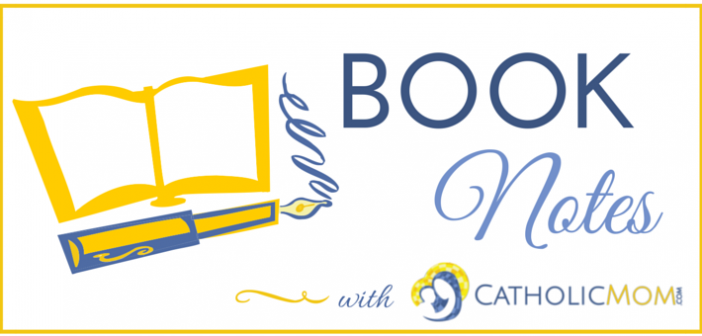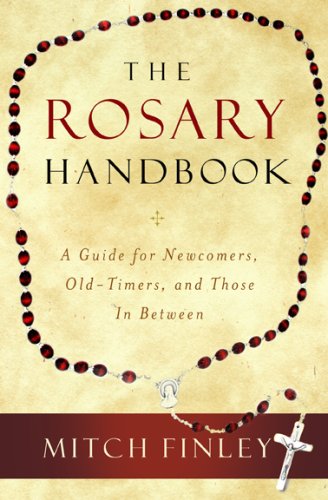Take your average Catholic. Ask him or her if he/she understands the Rosary. Chances are you’ll get a reasonably accurate reply, a good overview of the Rosary and how to pray it. Then say you go into more detail with a follow-up question, such as: Can you name the joyful mysteries of the Rosary? Or: Can you recite from memory the Hail, Holy Queen? Now chances are you’ll discover that your interviewee’s knowledge of the Rosary runs not very deep.
This is what I learned not long after the publication of my book, The Rosary Handbook: A Guide for Newcomers, Old-Timers, and Those In Between (The Word Among Us Press). There are thousands of Catholics who have a basically accurate understanding of the Rosary, but that’s where it stops. On a practical level, they don’t have the twenty joyful, sorrowful, glorious and luminous mysteries memorized. And even those who do commit such things to memory tend to not know what it means to say that the Rosary is essentially scriptural and Christ-centered in nature. And those who understand these facts don’t tend to have a mature Catholic understanding of the Bible, e.g. where it came from and how to interpret it using basic Catholic principles to do so.
Because all this, and more, is true of many Catholics who are otherwise well educated, my book struck a chord with thousands of Catholics who love the Rosary but tend to have an inadequate understanding of the Bible. Hence, they also tend to have a more or less superficial understanding of the Rosary. Prior to writing my book, I suspected this to be the case, so I decided to write a book on the Rosary that would—without saying so explicitly—teach the reader as much about Scripture and how Catholics read and interpret it as it would teach about the Rosary itself. In other words, I decided to apply basic Catholic historical-critical methods of biblical interpretation to the Rosary as a devotional prayer rooted in the Bible, mostly, and in sacred Tradition secondarily. I also wanted to apply such methods of interpretation to the Rosary as a devotional prayer form and to the history of its development. There are abundant pious legends about the origins of the Rosary, some of which even popes have swallowed as historical hook, line, and sinker. I wanted to give my readers the historical facts insofar as I could discover them. Since all but two of the Rosary’s “mysteries” come directly from the New Testament, I aimed to draw out from each one meanings dependent on the application of modern Catholic methods of biblical interpretation.
In the case of the two (glorious) mysteries taken from Tradition not Scripture—the assumption of Mary into heaven and her crowning as Queen of Heaven—I would use them as an opportunity to comment on the intimate relationship between Scripture and Tradition as the one source of divine revelation. So in reading my book the Rosary devotee would learn about much more than the Rosary. Indeed, I confess that in the end I wrote a book about the Rosary that gives as much information about Catholic scriptural theology and spirituality as it does about the Rosary.
Finally, when I began to write The Rosary Handbook I also wanted to help readers to recognize and sidestep theologically weak/spiritually unhealthy assumptions about the Rosary itself. I wanted to present the reader with a Rosary meant for grown-up Catholics, one that would not encourage a view of the Rosary, left over from the 1940s and ‘50s, dependent on a sentimentalized and romanticized image of Mary. Also, while acknowledging the value of insights into the Rosary related to Marian apparitions—e.g. at Fatima and Lourdes—I chose to emphasize the value of connecting with Scripture in the Rosary rather than connecting with “messages” the Church defines as “private revelation” and requires no one to believe.
[Tweet "The #Rosary: scriptural, not magical prayer. @mitch_finley introduces The Rosary Handbook."]
I also chose to say little in my book about anything that would encourage even a quasi-magical view of the Rosary. That is, I did not want to recommend magical beliefs such as this one, for example: that if one prays the Rosary a certain way or a specific number of times, or in certain circumstances, one is guaranteed a particular outcome. Again, I wanted to write a book on the Rosary that would encourage and nourish a mature adult Catholic faith and spirituality. Based on sales figures for The Rosary Handbook as of this writing (32,600+ copies sold, now in tenth printing), it looks as though more than a few Catholics appreciate having such a book.
Buy this book through our Amazon link and support CatholicMom.com with your purchase!
Be sure to check out our Book Notes archive.
Copyright 2016 Mitch Finley
 About the author: Mitch Finley earned a B.A. in Religious Studies from Santa Clara University and an M.A. in Theology from Marquette University. He is the author of more than 30 books on Catholic themes. In addition to The Rosary Handbook, these include What Faith is Not (Sheed & Ward), The Seeker’s Guide to Being Catholic (Wipf and Stock), and The Joy of Being Catholic (Crossroad). To learn more visit mitchandkathyfinley.com.
About the author: Mitch Finley earned a B.A. in Religious Studies from Santa Clara University and an M.A. in Theology from Marquette University. He is the author of more than 30 books on Catholic themes. In addition to The Rosary Handbook, these include What Faith is Not (Sheed & Ward), The Seeker’s Guide to Being Catholic (Wipf and Stock), and The Joy of Being Catholic (Crossroad). To learn more visit mitchandkathyfinley.com.
About the Author

Guest
We welcome guest contributors who graciously volunteer their writing for our readers. Please support our guest writers by visiting their sites, purchasing their work, and leaving comments to thank them for sharing their gifts here on CatholicMom.com. To inquire about serving as a guest contributor, contact editor@CatholicMom.com.




.png?width=1806&height=731&name=CatholicMom_hcfm_logo1_pos_871c_2728c%20(002).png)
Comments